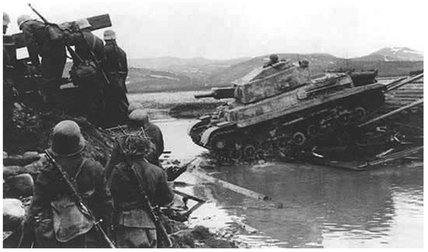Chapter Four
Horthy’s Hungarian Horrors
The Hungarian Army’s 4th Corps supporting a German offensive attacked the Romanian town of Arad in September 1944. Spearheaded by the Hungarian 1st Armoured Division, the 1st Field Cavalry Replacement Brigade and the 7th Assault Gun Battalion, this was the last independent action by the battered Hungarian Army during the war and one of the very few successes achieved by its limited armoured forces.The latter were equipped with a confection of home-grown armoured vehicles.
Although Arad fell on 13 September, the Hungarians soon found themselves engaged in a fierce six-day battle with the Romanian Army, which with the benefit of significant Soviet air support succeeded in destroying twenty-three Hungarian light and medium tanks. After the arrival of the Red Army a joint Soviet-Romanian counter-attack was launched to drive out the invaders. The Hungarian 7th Assault Gun battalion claimed to have destroyed sixty-seven Soviet T-34 tanks, at the cost of eight German-supplied StuG III assault guns destroyed and a further twenty-two damaged. The Hungarians, lacking air support and completely outclassed by the Soviets, were forced to evacuate Arad just a week after capturing it.
Hungary was the only Eastern European country with an indigenous tank capability. Hungarian ruler Admiral Horthy’s total contribution to Hitler’s armoured forces was modest, amounting to about 1,500 tanks, assault guns and armoured cars in 1941–44. This included armour supplied by Germany. These were used to equip two Hungarian armoured divisions and eight assault artillery battalions. The leading Hungarian manufacturers were Ganz and Manfred Weiss at Csepel and MAVAG and MVG at Raba.
Horthy’s armoured vehicle production was painfully slow and amounted to just under 900 vehicles for the whole of the war. The Hungarians constructed 120 indigenous 38M Toldi light tanks, some 500 40M Turan medium tanks (a version of the Czech LT-35), sixty 43M Zrinyi assault howitzers, an unknown number of 40M Nimrod self-propelled guns and 171 39M Csaba armoured cars in 1939–44. The Hungarian Army was also equipped with a few hundred German-supplied LT-35/38s, PzKpfw IVs and StuG IIIs as the Hungarian Turan was horribly late going into production.
Horthy provided two motorised brigades and a cavalry brigade equipped with about 150 Toldi light tanks, Italian-supplied L.35 tankettes and Csaba armoured cars for Hitler’s invasion of Yugoslavia in April 1941. However, Horthy’s armoured forces proved an embarrassment: his troops reached Novi Sad on the Danube, but one armoured unit after driving 30 miles south of the border ran out of petrol.
By June 1941 the Hungarians had just 189 tankettes, light tanks and armoured cars. Nonetheless, Hor thy committed large numbers of troops to Hitler’s Operation Barbarossa including the Carpathian Group of two brigades and the Mobile Corps of three brigades.The latter had to seize civilian transport to supplement their obsolete Toldis, Csabas and L.3s. Forming part of the German 17th Army the Mobile Corps fought well in the Ukraine, but after reaching the Donets was withdrawn home in November 1941.
In the summer of 1942 with Hitler desperate for reinforcements, Horthy despatched the 2nd Army consisting of the 3rd, 4th and 7th Corps bringing his contribution up to 200,000 men.This was supported by a single Hungarian armoured division equipped with PzKpfw 38(t)s, Panzer Mk III/IVs, Toldi light tanks, Csaba armoured cars and Nimrod self-propelled guns. In June the 2nd Army under General Jany reached the front at Kursk and moved to hold the line along the Don south of Voronezh. In the face of the Russian winter and T-34 tanks Hungarian morale soon fell.
After smashing the Romanian and Italian armies round Stalingrad the Russians moved to destroy the 2nd Hungarian Army on 15 January 1943. The Hungarian 1st Armoured Division, under German tactical control, was held back and not permitted to counter-attack in time to help restore the situation.The Hungarians lost 30,000 casualties, 50,000 PoWs and all their tanks and heavy equipment. It was the worst military disaster ever experienced by the Hungarian Army, who were quick to blame the Germans for abandoning them to their fate. Hor thy ordered the remains of 2nd Army home in March, leaving behind two weak Corps for security duties.
In mid-1943 the Hungarians reconstituted their battered 1st Armoured Division and created a second. Both were organised along German lines, but equipped with a mixture of Hungarian Turan and Turan II medium tanks. In addition eight assault artillery battalions were created, which were to have been equipped with the Hungarian Zrinyi assault gun. However, there were only enough of these to arm two battalions, so the others used German-supplied StuG IIIs. The Hungarians also raised the 1st Cavalry Division, which was later renamed the 1st Hussar Division. During 1942–44 Hitler was obliged to supply Hungary with almost 400 German-built panzers to try to prop up their army.
Disastrously Romania’s defection in mid- 1944 exposed Hungary’s southern frontier. Desperately trying to stem the Soviet and Romanian forces pushing from the east, the Hungarian 7th Assault Artillery Battalion succeeded in briefly giving the Soviets a bloody nose at Arad on the river Lipova. However, Horthy’s government began to wobble and by the end of 1944 the Hungarian 1st Army had withdrawn into Slovakia and the 2nd Army had been disbanded. Units were transferred to the battered Hungarian 3rd Army south of Lake Balaton or to the German 6th and 8th Armies in northern Hungary. Budapest, the Hungarian capital, came under the protection of General Otto Wöhler’s Army Group South.
By October 1944 it was apparent that Horthy was intent on joining Romania and Bulgaria in defecting to the Soviet camp. The Germans temporarily stabilised the situation by installing a puppet government with Operation Panzerfaust, but the Soviets were soon hammering at the gates of Budapest. The mixed German-Hungarian garrison included the Hungarian 1st Armoured, 10th Mixed and 12th Reserve Divisions, as well as a number of armoured car and assault artillery battalions.
The Red Army having stretched its supply lines to the very limit was unable to pierce the German positions, so switched its attentions east of Budapest. The 6th Guards Tank Army attacked from the north-east and the 46th Army from the south, encircling the city. Efforts to relieve the Hungarian capital in January 1945 got to within 12 miles of the city. The garrison on 11 February desperately attempted to break out: this ended in bloody disaster and Budapest capitulated the following day. Elements of the Hungarian Army continued to fight alongside the Germans, but their armour was long gone.
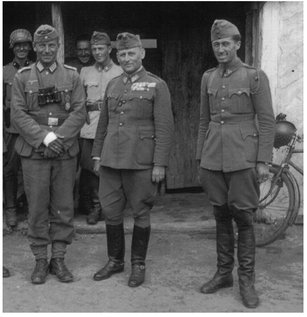
All smiles for the camera: senior Hungarian Army officers pose with their German liaison officer. While the Germans thought highly of Hungarian fighting qualities, ultimately Admiral Horthy felt let down by Adolf Hitler.
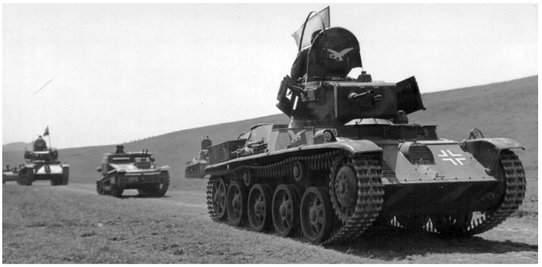
A column of Hungarian Toldi 38M light tanks and the ubiquitous Italian-supplied L3 tankette. The former was patterned on the Swedish Landsverk L-60. Although Sweden was better known for its artillery, the Landsverk 10 was the first in the series of light and medium tanks. The latest in 1939 was the L-60D, a 9-ton tank armed with a 37mm gun which was adopted by the Swedish Army as the Stridsvagn m/39.
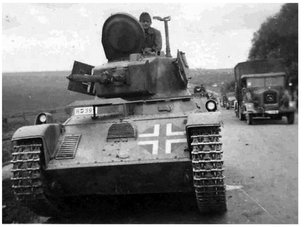
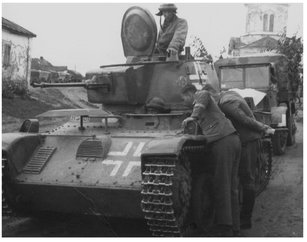
The Hungarian firms Granz and MAVAG produced around 120 Toldi I, II/IIa and III during 1943–44. There was little to differentiate it from the Swedish m/39 and it had the same torsion-bar suspension used for the four medium-sized road wheels, same-sized idler at the rear and two return rollers. In 1941 the Swedish m/39 was succeeded by the m/40 which had an improved gearbox, though the only external difference was the addition on the turret of a cupola with armoured periscopes.
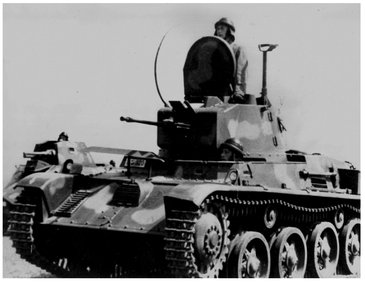
Another Hungarian Toldi. The vehicle behind it appears to be the Hungarian Nimrod 40M anti-aircraft/anti-tank self-propelled gun. This was built from 1940 using a Landsverk LVKV40 chassis with a turret made by Manfred Weiss armed with a 40mm L/70 Bofors gun. The torsion bar suspension has five road wheels and two return rollers.
Although the Swedish produced the m/42 medium tank armed with a 75mm gun, the Hungarians adopted the Czech T-21. Initially they wanted to buy Czechoslovakian Skoda tanks, but after the German occupation production was diverted to the German Army. Instead they got the licence for the T-21, essentially the Skoda LT-35 that resulted in the Hungarian Turan medium tank seen here.
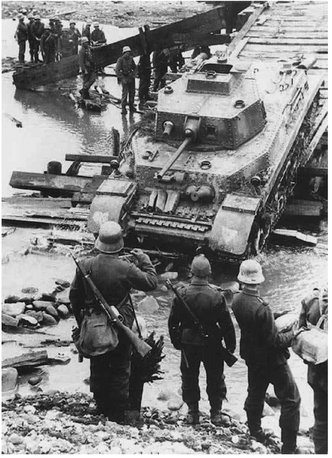
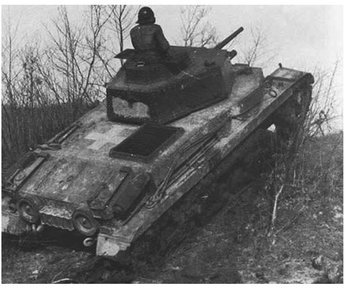
The Turan I replaced the original two-man turret with a three-man version and replaced the 37mm gun with a 40mm.
The Hungarian Csaba 39M 4x4 armoured car with a 20mm gun went into production in 1939, but only 171 were produced.
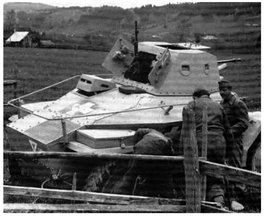
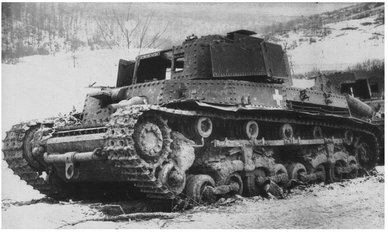
Abandoned Turans somewhere on the Eastern Front. The Turan featured a complicated leaf-spring suspension with eight road wheels in two sets of four with rockers. It had a similar pneumatically-controlled gearbox that proved unreliable in the LT-35 on the Eastern Front in the winter of 1941. Overall it was not a terribly successful tank.
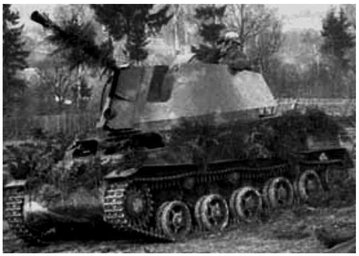
A rather blurred shot of the Hungarian Nimrod. Like most self-propelled anti-aircraft guns this could also be deployed in a ground-support role.
While the Germans greatly admired Hungarian soldiers such as these, Hungary’s tank force left a lot to be desired. Hungarian troops wore the M1938 helmet (seen here) that was almost identical to the German M1935. They were also issued with the much older M1917 helmet.
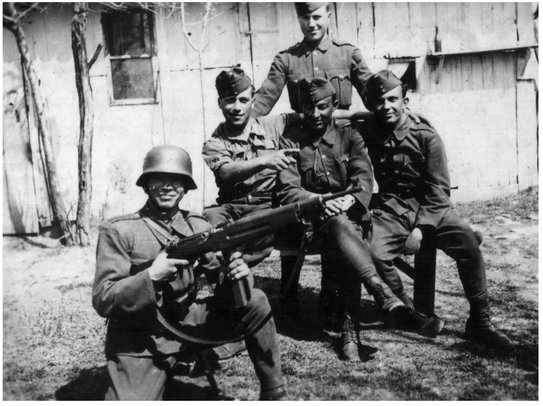
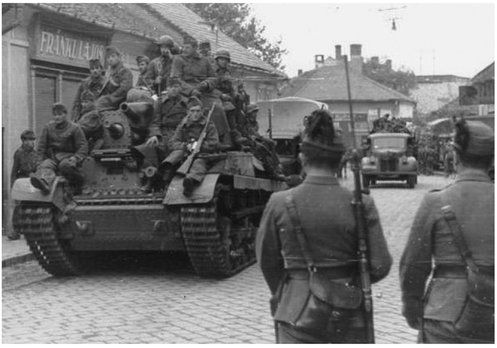
These two shots show Hungarian troops hitching a lift on the Turan II.This was up-gunned with a 75mm gun mounted in a modified turret. Although having a much better gun, the running gear suffered exactly the same problems.
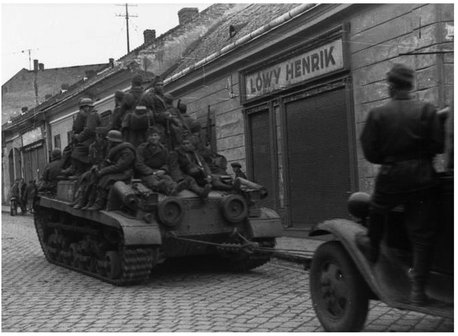
A column of Toldi light tanks. These along with the Turan equipped the Hungarian 1st Armoured Division on the Eastern Front.
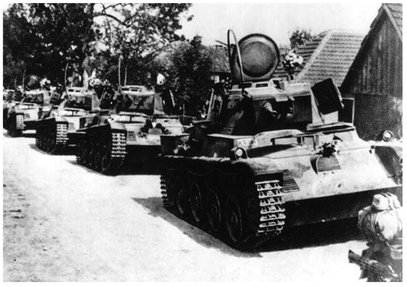
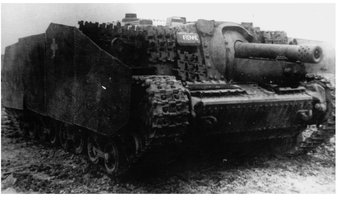
Two shots of the Zrinyi II 43M self-propelled howitzer. This mounted a 105mm assault howitzer on a widened Turan tank chassis. About sixty were built during 1943–44. It was a belated effort to emulate the success of Germany’s assault guns.
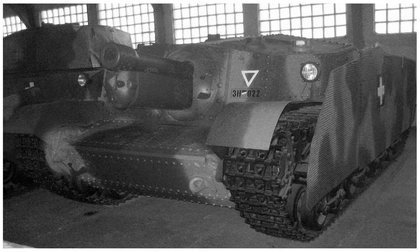
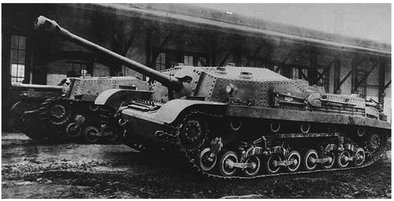
This shows the Zrinyi I prototype which was armed with a 75mm gun; behind it is the Zrinyi II.
As well as producing their own tanks, Hitler supplied Hungary with 385 tanks and assault guns including ninety-four Panzer Mk IVs between 1942–44. Panzer deliveries to Hitler’s Eastern Front allies dried up and were diverted in the summer of 1944 once they had become front-line states and started defecting to Stalin.
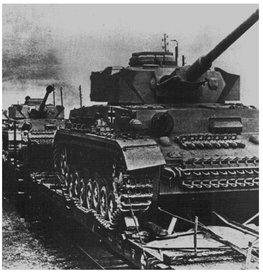
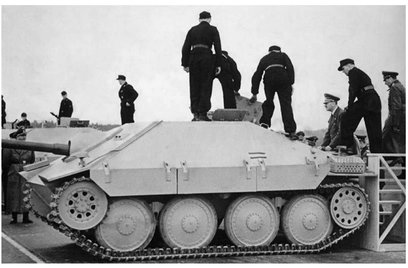
Hungary was the only Axis ally to receive the highly successful Hetzer 38(t) tank destroyer ; about 100 were delivered from the Czech tank factories in 1944. This example being examined by Hitler has just come off the production line, hence the sand base colour of the vehicle.
This shot shows a German Tiger II on the streets of Budapest following Operation Panzerfaust. This ensured that Admiral Horthy and his army remained loyal to the Nazi cause to the very end.The net result was that Hungary became a bitter battleground and the scene of the Nazis’ last major offensive of the war.
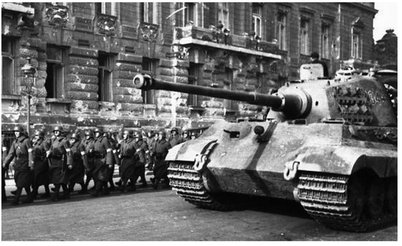
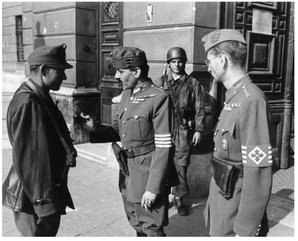
Hungarian officers remonstrate with the German Special Forces sent to seize Admiral Horthy. The element of surprise was such that the Hungarians were not given the chance to resist.
A Turan II negotiates a makeshift wooden bridge. The Hungarians built over 500 Turan I/IIs which ended up scattered across the Eastern Front.
